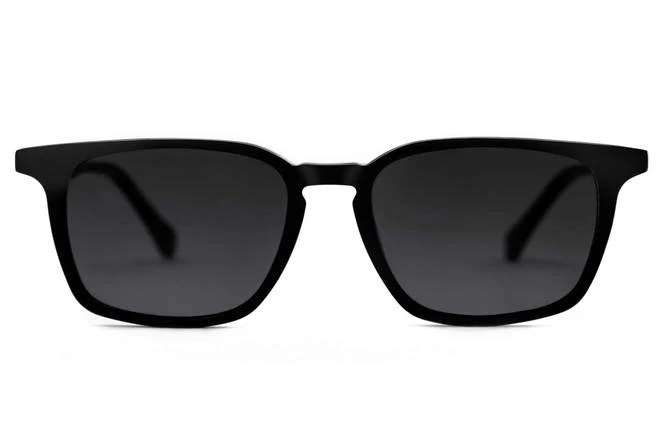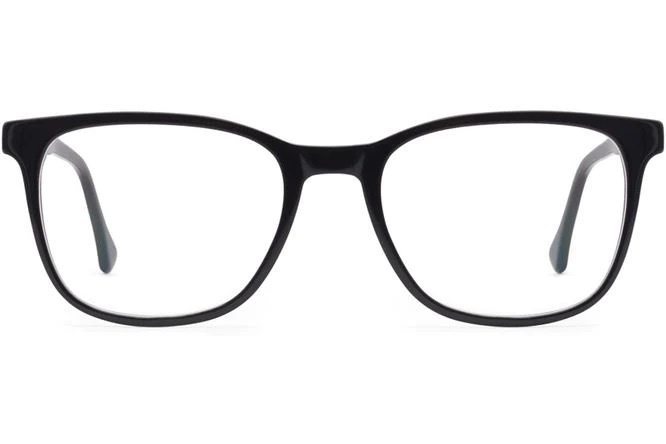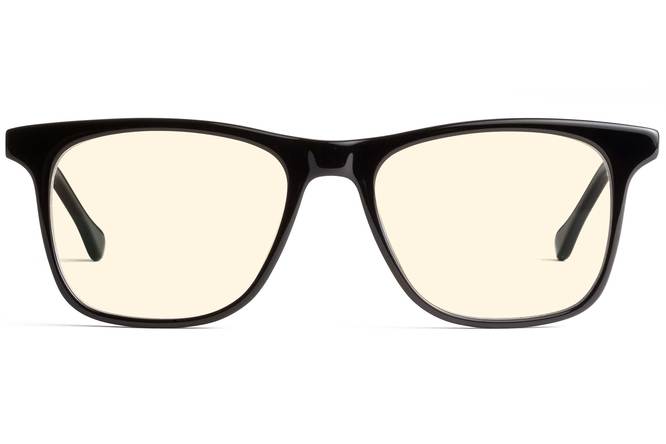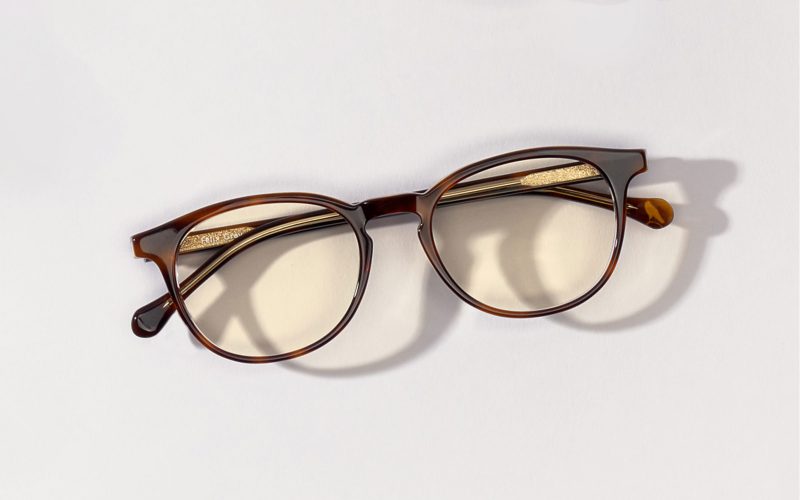If you regularly wear glasses or enjoy the occasional new pair of sunglasses, it’s likely you’ve been in a situation where you’re left wondering which color tint would be best suited for your eyes.
With so many colors to choose from, having a bit of background knowledge on the many different types of tints available and their specific uses is essential when picking up new eyewear.
In this guide, we’ll be covering all different sorts of tints for glasses, including what they’re used for, how they’re applied to glasses, and a range of benefits associated with each type.
What are tinted glasses?
Everyone has seen a pair of tinted glasses – bold polarized sunglasses, eyeglasses with a subtle amber hue, or even nearly-invisible tints that you may not even be aware of are all quite common.
But even if they’re common, most of us are clueless when it comes to the behind-the-scenes science and purpose of specific tints. And it’s reasonable not to be very knowledgeable in this area, as the purpose of different types of tints varies wildly, and many of them are used for specific niche circumstances most of us will never encounter.
A good general definition of tinted glasses, however, would be a pair of eyeglasses or sunglasses that feature lenses tinted by different colors and hues. The color could be anything, really: amber, blue, brown, pink – nearly every color imaginable has been used to tint a pair of glasses.
With that being said, some tints are mainly chosen for aesthetics and style, while others serve more important functions like eliminating glare or improving symptoms caused by digital eye strain.
How are glasses tinted?
On a basic level, glasses are tinted by either adding chemicals via heat treatments or including dyes when constructing the lens material itself. Not all types of lenses for glasses can be tinted either – for example, some high-index lenses are unable to include tints in their construction due to the extra hardware these prescriptions can require.
Most tints are applied to lenses (such as plastic CR-39 and polycarbonate lenses) through a heat treatment process that uses chemicals to permanently alter the color of the lens. Huge batches of lenses are immersed in heated baths of dyes; this is why it’s so simple to dye lenses all kinds of colors – gradients and other patterns can even be applied here by dipping specific sections for different amounts of time.
Another way tinted prescription glasses can be manufactured is by formulating the lens to include the tint from the start. A pair of glasses made from glass itself could be tinted by adding metal oxides to molten glass before it’s formed into the lens shape.
The final method of tinting glasses involves applying a lens coating to the backside of a pair of glasses with a layer of metal oxide, often used in higher-index prescriptions that would be difficult to use if manufactured via other means.
Benefits of different types of tinted lenses
Now that we’ve gone over how these tints are applied to the lens itself, we can discuss some of the common categories of tinted eyeglasses you’ll come across, as well as more specific lens colors used and any special reasons people tend to wear them.
Here’s a complete list of benefits that tinted eyewear can provide, depending on which type you choose to wear:
- Reducing glare and reflections from the sun or lights
- Improve visual clarity in various environments
- Protect your eyes from UV-rays
- Provide therapeutic effects
- Augment and enhance visual quality in some circumstances
Sunglasses
Sunglasses are one of the most common types of tinted glasses – most of us own a pair or two of sunglasses, and it’s pretty obvious what the tint is used for. In order to protect our eyes from harmful solar radiation (UV protection), sunglasses feature darker tints as well as polarized lenses that allow our eyes to adjust easily in high luminosity situations while outdoors.
Whether you’re headed to a beach with bright white sand over the weekend or driving home along your daily commute into the setting sun, the tints that sunglasses provide are incredibly useful for anyone. If you’re looking for a new pair, consider checking out our wide selection of non-prescription tinted sunglasses.
Our Choice: The Nash

Blue light glasses
If you aren’t familiar with blue light glasses, the main benefit of wearing them is that their tint blocks blue light produced from digital screens – which is why they’re often lumped in together with computer reading glasses.
Keep in mind, however, that just because they’re called blue light glasses doesn’t mean the lens is blue at all; the most popular options are actually clear lenses or amber lenses, which we’ll be discussing next.
Either way, if you’re someone who spends a lot of their day and night using screens (including kids), picking up a pair of blue tinted glasses is an excellent way to beat back the threat of digital eye strain and block blue light that could be impacting your sleep.
Our Choice: The Volta

Amber glasses
Amber glasses are a kind of sub-category of blue light eyeglasses, although they do offer a few key benefits that clear lenses with blue light filters don’t. Manufactured with a unique, slightly-amber hue to the entire lens, amber glasses are perfect for those of us dealing with recurring bouts of insomnia.
In recent decades, research aimed at unearthing the potential benefits of amber tinted lenses has been fruitful. One recent study published in the Journal of Biological and Medical Rhythm Research found that participants who wore amber tinted lenses for three hours prior to sleep experienced significant improvements to their overall mood and sleep quality.
If you’re interested in trying this out for yourself, you may want to consider picking up a pair of our amber glasses in the name of science.
Our Choice: The Jemison

Other tints, colors, and hues to consider
Clearly, tinted glasses can be incredibly useful in the right situation. Aside from the useful tints mentioned above, you can find glasses tinted with all kinds of other colors, including:
- Green lenses
- Blue lenses
- Red lenses
- Yellow lenses
- Purple lenses
- Pink lenses
- Brown lenses
- Gradient lenses
- Other colored lenses
Interestingly, different color tints have been found to change the way we respond to and experience emotional events – a study published in Frontiers in Human Neuroscience found that tints influence our visual processing ability in a number of strange ways.
In this study, researchers tested the autonomic responses of participant’s brains while wearing tinted glasses – both unpleasant and pleasant images were shown, and different colors resulted in varying emotional response levels across those tested.
While this study may not reveal any truly astounding data, some individuals and professions already use tinted glasses to enhance and improve reality in real-time:
Real-life examples of useful glasses tints
One of the most obvious uses for tinted glasses is their ability to aid professional athletes in their quest to claim gold – tinted sunglasses or goggles could even be considered an essential tool in the arsenal of anyone who participates in outdoor sports of any kind. Skiing, snowboarding, and cycling are just a few examples.
Gray and brown tinted glasses are often used by construction workers and other kinds of outdoor workers who need to rely on steady depth perception and be able to clearly see what they’re doing with their hands in the sunniest of situations – including heavy machinery.
Another example would be your average office or technology worker. For those of us who are stuck facing a screen all day, a pair of amber or clear lens blue light glasses worn indoors is one of the best ways to avoid burnout and stress from eye strain caused by blue light emitted from screens.
Final thoughts
With so many types to choose from, picking up a new pair of glasses with tinted lenses may leave you feeling a bit overwhelmed. Luckily, some of the most popular types of tints come with features and benefits that work together to improve your visual stress.
If you want to learn more about the science behind glasses, contact lenses, and visual corrections, spend a bit of time browsing our library of blog content.
